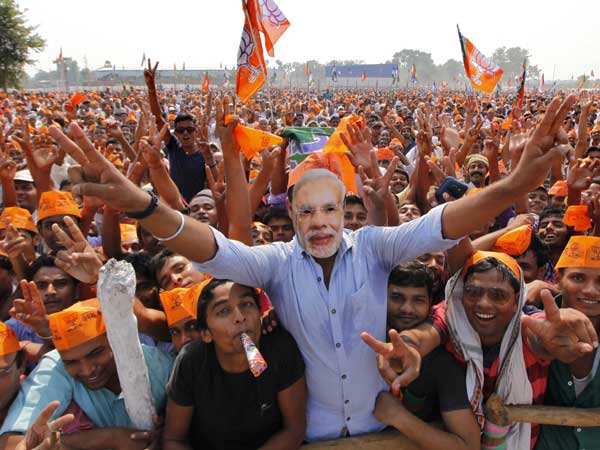
Four years of NDA government at the centre have undermined one major gain that came with Narendra Modi’s prime ministership -- the revival of single party dominance and the end of pesky coalition partners. Being in power in a complicated domestic and global environment and the slips and misses in delivering on election promises have led the opposition to fancy the prospect of a return to power. The start of that, typically, is in the shape of a so-called “federal front”, a term used by Telangana chief minister K Chandrashekhar Rao to describe an yet-to-be-created non-BJP, non-Congress entity.
But, that is essentially new nomenclature for a discredited term also conveying the idea of a non-BJP, non-Congress entity: third front. It was discredited because of the number of times it was floated as a trial balloon, raising hopes of a new direction in politics, only to fizzle out under the weight of the unbridled ambition of its constituents and a confused programme for action. Evidently, there is hope within the fraternity of non-BJP, non-Congress parties that they still have the credibility to pull it off on their own against the national parties.
The dawn of the current coalition era started in October 1988 with the formation of the seven-party National Front, an essentially non-Congress formation. Political scientist and analyst Rajni Kothari had described it as the “start of the coalition era” in Indian politics. The formation of the alliance was as dramatic as the language. Among the architects of the front was NT Rama Rao of Andhra Pradesh, a former actor, who described the event in the following colourful words: “The National Front is like a chariot of Lord Aditya drawn by seven horses. This chariot of ours will dispel the gloom and shadows that thickened through the passage of the last few decades of national history.”
However, these coalitions have proved to be both fragile and fractious when they have been formed independently of the two national parties -- and sometimes, even when they have been supported by either of the national parties from outside, like the BJP did in the case of VP Singh’s government and the Congress in the case of Chandrashekhar’s government. In essence, these coalitions have been no more than very modest formations compared to the chariot of Lord Aditya drawn by seven horses that NTR thought they would be.
The BJP appears to believe, perhaps with good reason – to be detailed later – that under Modi they need not have an outreach programme for coalition partners. The Congress party, which had been the first to think of an ‘ally-mukt’ party after the National Front experiment, now appears to have become the pivot of the anti-BJP forces. There has been no beneficial fallout from Modi’s success on the Congress, in the sense of unshackling it from the tyranny of coalition partners. In its death throes for longer than has been acknowledged, and buoyed by erratic rather than systematic election victories, the party appears ready to clutch at anything to stay in the game. Unlike the BJP under Modi which has paid only lip service to coalition-dharma, the Congress party, struggling with numbers since 1989, has shown a propensity for political compromise to keep the peace. As the record of UPA-I and UPA-II has shown, this has not been beneficial in the long run for either the party, governance or the country in general.
Meanwhile, even as the Congress appears as a pivot, talk of opposition unity is fraught with disunity. Take the CPI (M) for instance. It has given the green light for an understanding with the Congress party. But, this is significantly different from a pre-poll alliance or any form of alliance. The CPI (M) chooses allies only on the basis of the success of ‘joint struggles’. This means that only those that are in its likeness and share the same outlook and principles can be allies. There are no automatic choices here. The CPI (M) and the Samajwadi Party went through a lot of common programmes during UPA-I, especially over the Indo-US nuclear deal. But, when it came to an alliance in Uttar Pradesh for the 2007 state assembly polls, the CPI (M) walked out. The subtext in an understanding is, there is always an exit route.
Regardless of what their listening posts may be conveying, the anti-BJP coalition has a difficult task -- and they have been trumped time after time by Modi over the past four years. The government faces challenges simultaneously on caste, communal and women issues, apart from farm distress and unemployment. But, Modi has overcome these to create the art of winning elections. He has shown that he is a different kind of political strategist from his opponents and doesn’t waste time trying to stick to a script. He can morph, change and move ahead, all in midstream. Faced with a negative campaign, he can even change the discourse. When he was expected to pursue the development agenda, he turned to emotional and politically divisive issues.
Against the backdrop of the Lok Sabha elections, whose timing is difficult to predict, the challenges are expected to be many and dispersed. The bets could be on Modi to sidestep them. If the past is an indication, a disparate coalition will need to get its act together to challenge the BJP, even if the political environment offers much to take advantage of.
ananda.majumdar@mydigitalfc.com





